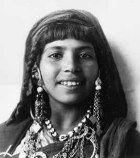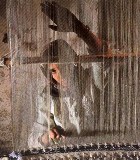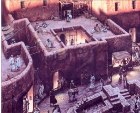Bible study activities
Scenes from a woman’s life
 Interview your own mother, or an older female relative.
Interview your own mother, or an older female relative.
You could compose your own list of questions for her, or ask some of the following:
1. What are the three events in your life that you remember most vividly?
2. Can you describe one of these events?
3. What things have you done that you are most proud of?
4. What did you find most difficult in your life?
5. Did you learn about Mary of Nazareth when you were at school?
6. How was Mary portrayed?
7. What part did Mary play in religious rituals that you were involved in?
8. Which of Mary’s qualities have you tried to imitate in your own life?
You could, if you wish, answer some of these questions yourself, and recall what you learnt about Mary in your early schooling.
Jot down your memories and compare with a learning partner.
Paintings of Mary and Jesus

Stage 1
- Go to Mary & Jesus: paintings of the birth of Christ. Scroll through the images from first to last.
- Which aspects of the story of the birth of Christ have been the most popular with artists?
- Would this have been your choice?
- Is there some other part of the story that appeals to you? Some particular quality you would like emphasized?
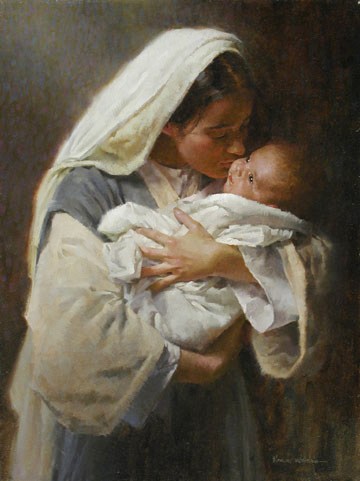 Artists paint what they want to paint, but they also paint with their audience in mind. Look at the paintings again.
Artists paint what they want to paint, but they also paint with their audience in mind. Look at the paintings again.
- Who is the painting directed at?
- Why do you think this?
Stage 2
If you have chosen a less popular event, something different, ask yourself why this other incident appeals to you more than the scene favored by the artists.
Spend some time quietly thinking about your response.
Four different images of Mary?
The Bible texts for this activity are at Mary in the Scriptures

Mary in ‘The Passion of the Christ’
Read the episodes about Mary of Nazareth in Mark’s gospel
- What image of Mary do you receive from these episodes?
- If this was the only information you had about Mary of Nazareth, what would be your impression of her?
- What purpose might Mark have had when he wrote about Mary?
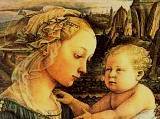
Madonna and Child,
Fra Filippo, detail
- Read the episodes about Mary of Nazareth in Luke’s gospel
- What image of Mary do you receive from the episodes in Luke’s gospel?
- If this was the only information you had about Mary of Nazareth, what would be your impression of her?
- What do you think Luke was trying to say about her and about Jesus?
- How is Luke’s image of Mary different from Mark’s?

The Flight into Egypt, Caravaggio
- Read the episodes about Mary of Nazareth in Matthew’s gospel
- What image of Mary do you receive from the episodes in Matthew’s gospel?
- If this was the only information you had about Mary of Nazareth, what would your impression of her be?
- What might have been Matthew’s purpose when he wrote these stories about Mary? What do you think he was trying to say?
- What similarities are there between the three portrayals of Mary? What differences? Why might there have been these differences?

Mary as portrayed in the BBC ‘Passion’
- Read the episodes about Mary of Nazareth in John’s gospel
- What image of Mary do you receive from the episodes in John’s gospel?
- If this was the only information you had about Mary of Nazareth, what would your impression of her be?
- What purpose might John have had when he wrote these stories about Mary? What do you think he was trying to tell us?
Movies with themes linked to Mary’s story
Can you name these movies?



Can you see a connection with events in Mary’s story?
Answers HERE (see ‘Mary of Nazareth’).
Can you think of other movies that have themes that remind you of Mary’s story? Make a list, then think about why you have chosen these particular movies.
Mary’s homeland
Draw up a rough map (see Map 8 on this link) showing the relative positions of Jerusalem and Nazareth, marking in the boundaries of the provinces Samaria, Galilee and Judea.
- How far is it from Nazareth to Jerusalem?
- What sort of terrain would you go through, traveling from one to the other?
- Identify a possible route that Mary might have taken in her journey from Nazareth in Galilee to ‘a Judean town in the hill country’ where Elizabeth lived.
Research the world of Mary, and then describe
- the type of food she would have eaten
- the clothing and appearance of the people she travelled with.
Drawing of Mary’s life
 Design symbols for
Design symbols for
- one of the main events in Mary’s life, or
- a particular quality she showed.
Think outside the box.
Make sure the symbols relate to her story and not just to Jesus’ life.
Express these symbols in a visual form, either by drawing or painting them, producing a collage or poster.
Focus questions for the gospel passages
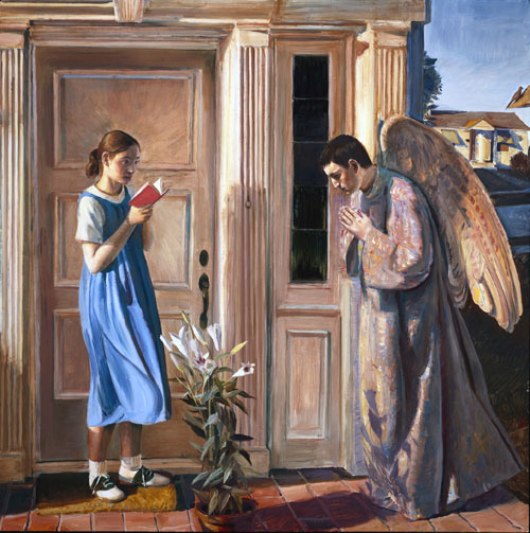
The Annunciation, John Collier
1. What are the most interesting moments in Mary’s story?
2. What is God’s interaction with the main characters? What does this tell you about the narrator’s image of God? Do you agree with this image?
4. What is happening on either side of the episodes in Mary’s story, in the chapters before and after it? Does this help you understand the purpose of the story?
5. The narrator/editor has chosen to tell some things and leave other things out. What has been left out of the story that you would like to know?
6. Are the characteristics and actions of the people in the story still present in the world? How is the story relevant to modern life, especially your own?
Famous Quotes

The Holy Family, Walking With God,
Morgan Weistling
- ‘The angel said to her ‘Do not be afraid, Mary, for you have found favor with God. You will conceive in your womb and bear a son, and name him Jesus. He will be called the Son of the Most High.’ (Luke 1:30-31)
- ‘My soul glorifies the Lord…..’ (1:46)
‘She laid him in a manger, because there was no place in the inn.’ (2:7) - ‘Did you not know I must be in my Father’s house?‘ (2:49)
- ‘And his mother treasured all these things in her heart.’ (2:51)
Each of these quotes relates to an episode in the birth or childhood of Jesus. Mary was intimately involved in each.
List some key moments in your relationship with a child – perhaps your own, perhaps a child you know.
If you were writing about these key moments, what words would best describe them? You could include quotes from yourself or the child, or comments about the episode.
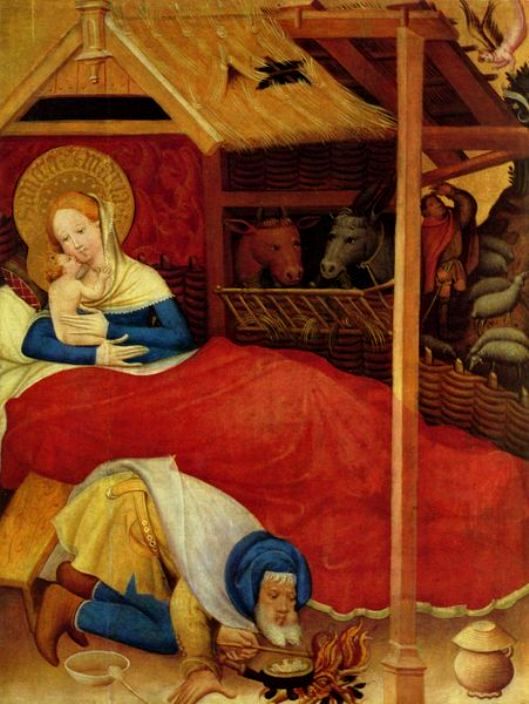
The birth of Christ, Conrad von Soest
Search Box
![]()
© Copyright 2006
Elizabeth Fletcher

